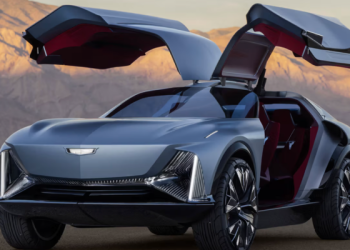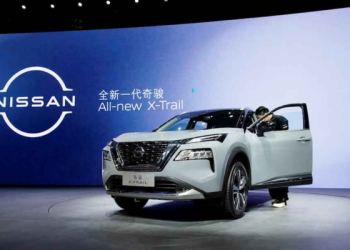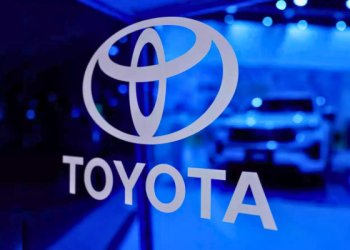China experienced a significant surge in car exports to a record high in April, even as domestic sales faced a 5.8% year-on-year decline. This drop in domestic sales is attributed to intense price competition and consumer caution amidst a shaky economic recovery.
Data from the China Passenger Car Association (CPCA) revealed that car exports soared by 38% year-on-year to 417,000 units in April. This growth continued the strong momentum from the previous month, which saw a 39% increase in exports. Despite an ongoing anti-subsidy investigation by the EU into Chinese automakers, which has disrupted and pressured vehicle exports to the bloc, China has actively explored markets in South America, Australia, and ASEAN countries for export opportunities.
Cui Dongshu, the secretary-general of the CPCA, noted that local automakers now face a choice between expanding overseas or losing out, as competition in the domestic market intensifies.
Meanwhile, passenger vehicle sales in China, the world’s largest auto market, experienced a 5.8% decline in April compared to the previous year, amounting to 1.55 million units. This figure also represented a 9.6% drop from March. Cui attributed this decline to market sluggishness, with some automakers continuing production despite rising inventories at dealerships.
Focus on new energy vehicles (NEVs)
In a positive development, the share of new energy vehicle (NEV) sales in China reached a new high, indicating progress towards the country’s green goals. NEVs accounted for 43.5% of total car sales in April, setting a new record after surpassing half of total sales in the first half of April. China aims to achieve a 45% NEV market share by 2027.
While electric vehicle (EV) sales increased to 12.1% in April from 10.5% in March, plug-in hybrid electric vehicle (PHEV) sales saw a 64.2% jump, albeit slower than the 75.4% rise in March. This growth in the PHEV segment has been instrumental in the success of domestic giant BYD, constituting 57% of the company’s car sales in April. China’s share of the global PHEV market rose to nearly 70% in the first quarter, highlighting its dominance in this segment.
Challenges and initiatives
Despite the growth in the PHEV segment, overall EV sales in China have been modest, indicating a slowdown in demand. This is despite a prolonged price war that has involved over 40 brands. To stimulate demand, China has introduced subsidies of up to 10,000 yuan ($1,380) for auto trade-ins. Additionally, automakers such as Tesla and BYD have begun offering best-selling models with no down payments to attract cautious consumers.
The current scenario in China’s automotive industry reflects a complex landscape, with a delicate balance between domestic and export markets, as well as the gradual shift towards greener vehicles. As competition intensifies and consumer preferences evolve, industry players will need to adapt and innovate to stay ahead in this dynamic market.
Read more on Jubril Arogundade: Buying new Nigerian-made cars boosts the economy, cuts carbon emissions by 50%







![Ford to sell used vehicles on Amazon [Source Reuters]](https://autojournal.africa/wp-content/uploads/2025/11/Ford-Hyundai-to-sell-used-vehicles-on-Amazon-Source-Reuters-350x250.png)
![K.R. Pfiffner [Source Manufacturing Outlook]](https://autojournal.africa/wp-content/uploads/2025/11/K.R.-Pfiffner-Source-Manufacturing-Outlook-350x250.png)












